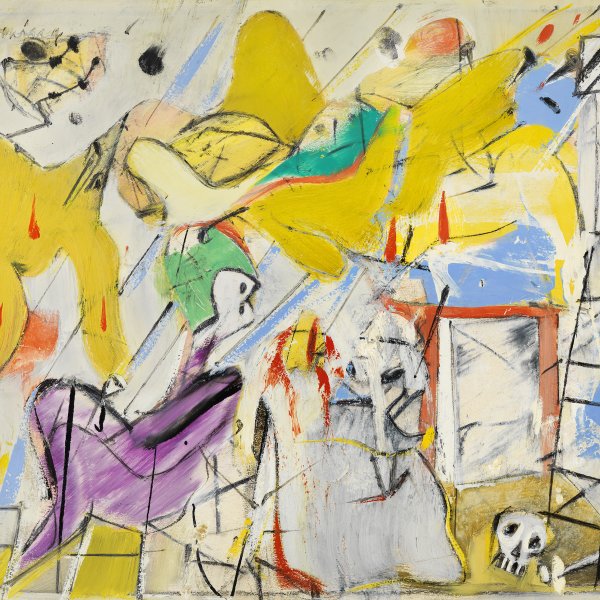Casa Blanca B
The abstract painter Josef Albers, who taught at the Bauhaus before emigrating to the United States in 1933, always remained faithful to the constructive spirit of this prestigious school. In his new country he made a significant contribution to promoting geometric abstraction — both in his teaching posts at Black Mountain College and Yale University and through his involvement in the activities of the group of American Abstract Artists (AAA) alongside artists of varying provenance, such as Ad Reinhardt and Robert Ryman — which developed into Minimal Art years later.
The study of geometrical shapes in relation to the picture plane and the absence of any content or meaning was a constant feature in Albers’ painting. In addition to this constructive concern, he showed a permanent interest in the problems of colour perception, and untiringly explored the subjective experience of chromatic values. He aspired to demonstrate that the appreciation of colours is fictitious, as how the eye perceives different tones and colours depends on those surrounding them. His essay on the Interaction of color expounds his theory that changes in place, form and light cause alterations in colours, and his main series of paintings entitled Homage to the Square, begun in 1948, is the visual embodiment of his theoretic research. In these highly mathematical compositions based on neatly nested squares of pure colours, he explored the interaction of different tones through multiple colour combinations.
Casa Blanca B, painted between 1947 and 1954, is also a good example of Albers’ geometrical abstract language. It belongs to a series in which the artist continued to explore the principles of colour, here through two differentiated focal points of concentric squares. Using a mathematical scheme, he builds the image from quadrangular planes of superimposed colours that are grey in the centre and flesh coloured at the edges, creating different optical effects of advancing and receding, in order to draw the viewer’s attention to the singular properties and functioning of vision.
Paloma Alarcó









